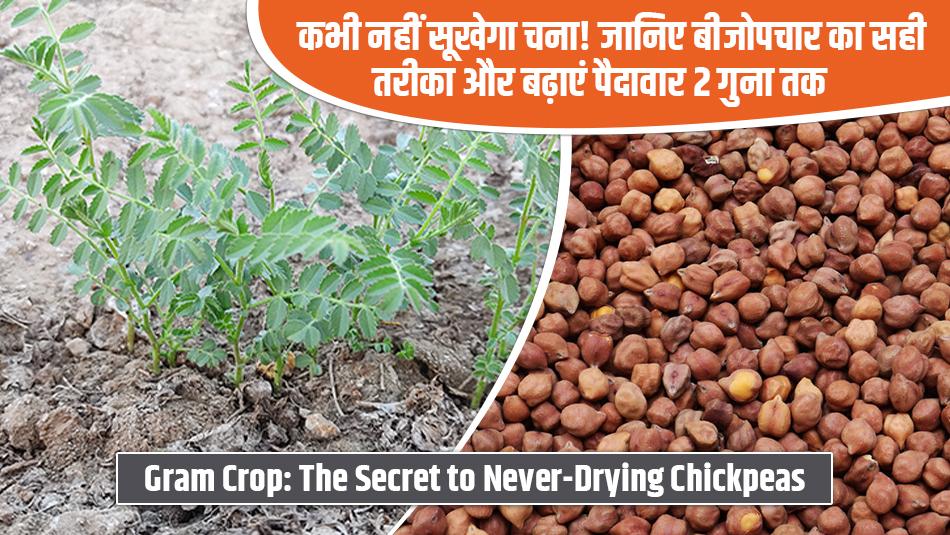
To protect the chickpea crop (Gram Crop) from wilt, diseases, and pest attacks, seed treatment is one of the most essential pre-sowing practices. By treating chickpea seeds with fungicides and insecticides before sowing, farmers can ensure a healthy start for their crop and reduce the chances of yield loss.
Prevents Wilting:
Wilt is a common fungal disease in gram crops that causes plants to droop and eventually die. Treating seeds with a fungicide can effectively protect the crop from this disease.
Controls Fungal Diseases:
Chickpea crops are prone to several diseases such as Ascochyta blight, Botrytis grey mold, and Fusarium wilt. Fungicidal seed treatment helps manage these infections and ensures healthy plant growth.
Prevents Insect Infestation:
Gram crops are vulnerable to pests like aphids, leaf miners, and thrips. Treating seeds with suitable insecticides can prevent early-stage pest infestation and safeguard crop health.
The rabi season has already begun from the first week of October, and farmers across India are preparing to sow chickpeas. Agricultural experts note that the “wilt problem” is one of the major challenges in gram cultivation — often causing severe yield losses.
However, if farmers treat their seeds properly before sowing, this issue can be eliminated from the root. Experts recommend treating seeds at least 24 hours before planting to allow the fungicide and insecticide coating to dry and stick properly to the seeds.
According to agricultural scientist Dr. Rajeev Singh, farmers must not only treat their seeds but also do it in the correct sequence and with the right combination of products. Improper treatment often leads to poor disease control despite applying chemicals.
To get the best results, farmers should use a combination of five components for gram seed treatment:
Carboxin, Trichoderma, Ammonium Molybdate, Rhizobium Culture, and PSB Culture (Phosphate Solubilizing Bacteria).
This combination ensures stronger plants, better resistance against diseases, and higher yields — while almost eliminating the problem of crop drying or wilting.
Always perform seed treatment on the day before sowing and let the seeds dry completely. Properly treated seeds not only resist disease but also establish faster and stronger plants, helping farmers achieve up to double the yield.